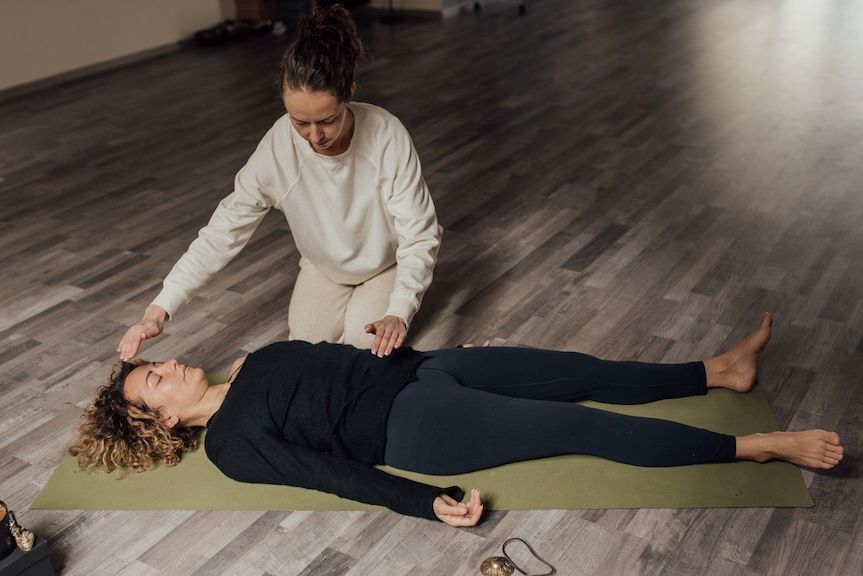
Treating the whole person, holism emphasizes on mind, body and spirit. But what does holistic therapy mean? This approach integrates different types of therapies that deal with all aspects of a person’s well-being such as better mental clarity, physical health and emotional balance. Find out how holistic therapy can improve your life in general.
What is holistic therapy, and how does it work?
Holistic therapy treats the whole person—mind, body, and spirit—promoting overall well-being. It integrates alternative practices like acupuncture, yoga, and meditation with conventional treatments. By addressing emotional, physical, and spiritual needs, holistic therapy aims to restore balance and enhance natural healing processes.
Holistic therapy means a full treatment of a patient, not just some symptoms or ailments. The practice includes combining conventional treatment with alternative ones, such as acupuncture, massage, yoga, and meditation. It thus acknowledges the legitimacy of the interrelation of the mind, body, and spirit in the address of all the spheres involved in the welfare of the individual.
In essence, holistic therapy helps to relieve some of the physical symptoms by simulating balance and improving the body’s natural healing potential; it thus reduces stress and enhances emotional resilience. A person is encouraged to make a positive contribution to their health and be more connected with their general wellness journey.
How can beginners start with holistic therapy?
Beginners can start holistic therapy by exploring various modalities like yoga, meditation, and aromatherapy. Consulting with a holistic therapist helps tailor a personalized plan. Incorporating practices gradually and being open to different therapies enhances self-awareness and promotes a balanced lifestyle for overall well-being.
The first step for a newcomer to this field would be to dabble in the different modalities and approaches to find out what is best for them. Start with gentler practices like yoga or meditation to help embody the habits of mindfulness and relaxation. Consult with a trained holistic therapist who will guide the way and help in customizing an individual plan that is aligned with one’s health goals and needs.
Engage gradually in these practices to enable yourself to make adjustments to these changes and to know how your body responds to them. Knowing more about oneself through openness to different styles of therapies and going through the process helps in pursuing a better and balanced life and supports general well-being.

What are the benefits of holistic therapy for mental health?
Holistic therapy benefits mental health by reducing stress, enhancing mindfulness, and promoting emotional balance. Practices like meditation and yoga improve mood and cognitive function. By addressing mental, emotional, and spiritual aspects, holistic therapy provides comprehensive support for mental well-being and resilience.
Holistic therapy affects mental health in a ton of ways because it touches on interlinked elements of mental, emotional, and spiritual well-being. Meditation, mindfulness, and yoga are very useful practices for effectively taking away stress and anxiety and bringing calm, serenity, and openness.
These techniques can ease one’s mood via the release of endorphins and improvement in cognitive functioning, which enables better focus and clarity of mind. Holistic therapy brings emotional balance by allowing self-awareness and control over the emotional aspects of a person. In this way, the comprehensive mode of treatment imparts the ability to handle issues related to mental health in a comparatively much better way and promotes overall mental well-being with long-lasting stability.
How does holistic therapy enhance physical health?
Holistic therapy enhances physical health by promoting relaxation, reducing stress, and improving bodily functions. Techniques such as massage and acupuncture stimulate the body’s natural healing abilities, boost immunity, and alleviate pain. Integrating holistic practices fosters a healthy lifestyle and strengthens overall physical well-being.
Holistic therapy makes a huge impact on physical health since it incorporates only natural and non-invasive methods that help the body in its natural healing processes. Some therapies, such as massage and acupuncture, relax tension, relieve pain, and increase blood flow, hence creating an invigorating ability to rest and reduce stress.
These therapies will also improve immune function by increasing lymphatic circulation, reducing inflammation, and therefore offering the basis for good health. Holistic practices give way to a healthy lifestyle that includes regular exercise, balanced nutrition, and management of stress. Thereby, one’s physical well-being gets strong and also instills longevity in life with good health by getting to the root of the problem instead of mere symptoms.
What role does mindfulness play in holistic therapy?
Mindfulness is central to holistic therapy, fostering present-moment awareness and self-acceptance. It enhances emotional regulation and reduces stress. Through practices like meditation and mindful breathing, individuals develop greater self-awareness and resilience, supporting mental, emotional, and physical well-being.
Mindfulness forms an important part of holistic therapy, as it helps the patient to develop present-moment awareness and self-acceptance. By focusing on the present moment, mindfulness allows people to become more aware of their thoughts, emotions, and body sensations for the purpose of emotional regulation and the reduction of stress.
People practice meditation, mindful breathing, and other activities regularly to develop self-awareness and build up strength and resistance for dealing with life’s challenges. It helps in maintaining mental and emotional well-being by providing the ability to react with clarity and calmness to any situation rather than acting impulsively. It offers physical health benefits, like reduced tension and better sleep patterns, which ultimately lead to a much healthier lifestyle.
How does holistic therapy address chronic pain?
Holistic therapy addresses chronic pain by integrating practices like acupuncture, massage, and yoga to reduce tension and promote healing. These therapies improve circulation and decrease inflammation. By focusing on the whole person, holistic therapy supports long-term pain management and enhances quality of life.
Holistic therapy is an integrated and multi-disciplinary approach to managing chronic pain. Acupuncture, massage, and yoga are some of the techniques that attempt to relax muscle tension, improve blood flow, and reduce inflammation, generally causes of chronic pain. These therapies activate the natural healing processes of the body, hence alleviating and rehabilitating discomfort.
Holistic therapy creates long-term management strategies that deal with the core reasons for pain and can enhance the quality of life. Empowers patients to assume their responsibility in the management of pain by adopting lifestyle modifications in the form of exercise, diet, and stress reduction for improved health and reduced pain.

Conclusion
Holistic therapy looks promising for overall health improvement due to its focus on the whole person. Physical and emotional demands can be met simultaneously by combining different modalities. Look into different approaches until you find what works for you so that your journey starts towards a balance and healthier life.

